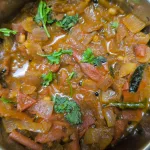

Join the Newsletter
Dive into quick, nutritious recipes, expert health tips, local food finds, and the latest in nutrition. Let’s explore healthier living together!
From A to K: The Complete Food Chart with Vitamins for Everyone
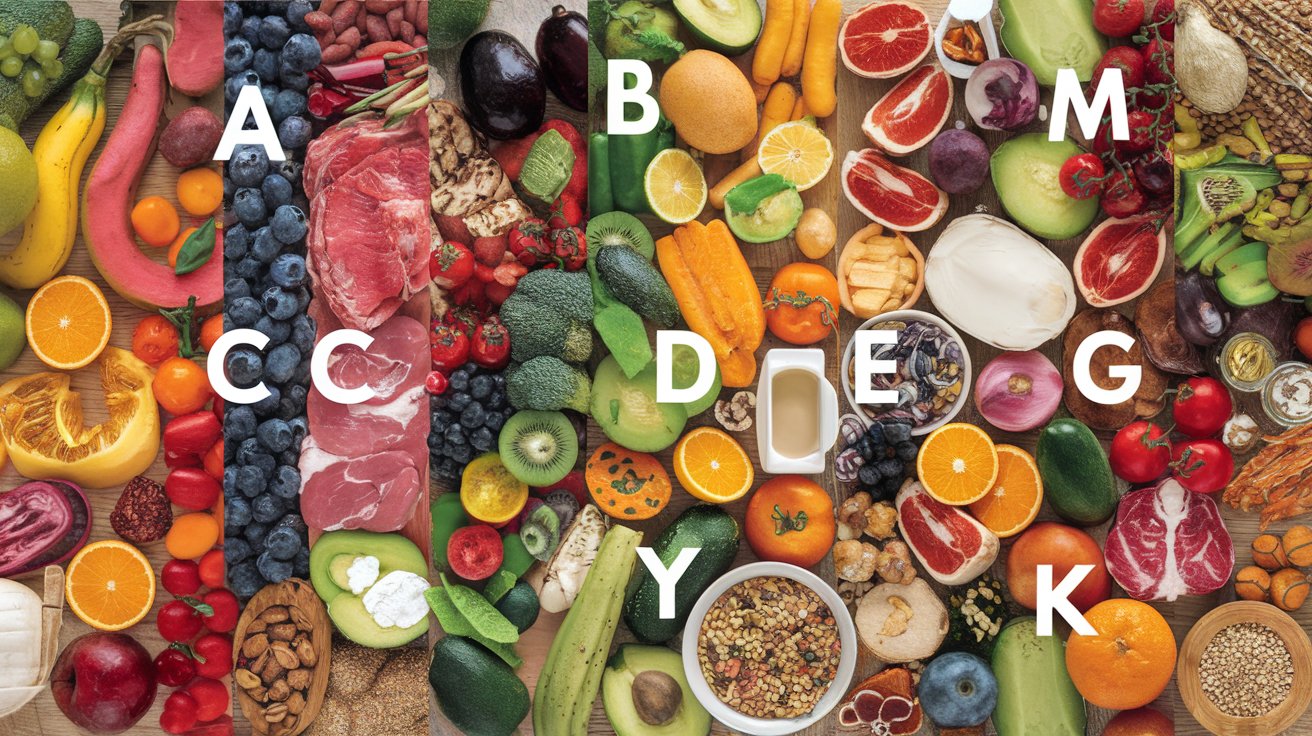
Affiliate Disclosure
Before reading this post, please be aware that some links in this article are affiliate links. This means that if you click on one of these links and make a purchase, we may earn a commission at no additional cost to you. We only promote products and services that we believe will be beneficial to our readers.
For more information, please read our full Affiliate Disclosure.
Introduction to Vitamins
No products found.
Nutrients known as vitamins are crucial for the body’s optimal functioning. While they don’t provide energy like carbohydrates or fats, they play a critical role in various physiological processes, including metabolism, immunity, and cell function. There are two main types of vitamins: fat-soluble (Vitamins A, D, E, and K) and water-soluble (Vitamins B-complex and C). This article explores the essential vitamins from A to K, their benefits ,food chart, and the best dietary sources to ensure you’re getting enough of these crucial nutrients.
Vitamin A
Vitamin A plays a vital role in preserving good vision, supporting immune health, and promoting skin vitality. It also plays a role in reproduction and cellular communication. There are two forms of Vitamin A: preformed Vitamin A (found in animal products) and provitamin A carotenoids (found in plant-based foods).
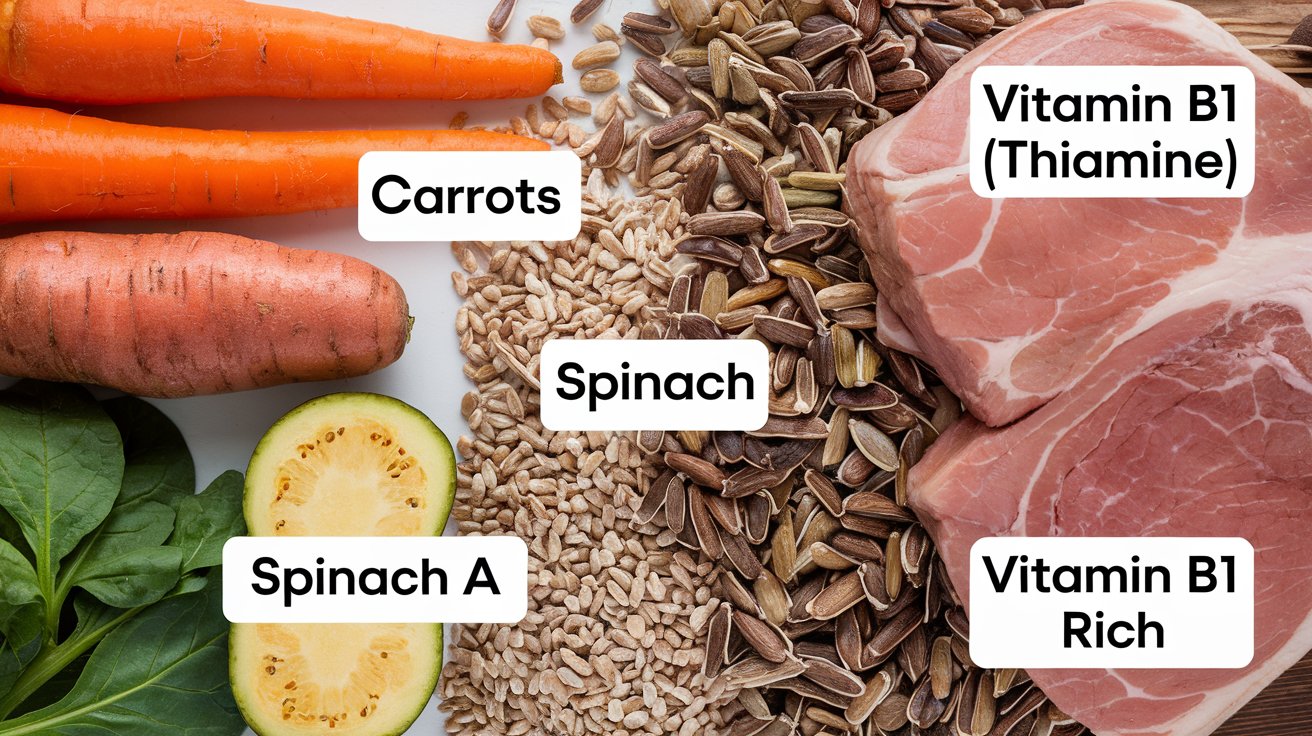
Best food sources of Vitamin A:
- Liver
- Fish oils
- Carrots
- Sweet potatoes
- Spinach
- Kale
Vitamin B1 (Thiamine)
Vitamin B1, also known as thiamine, helps convert carbohydrates into energy and supports nervous system function. Thiamine is crucial for muscle function and the production of adenosine triphosphate (ATP), which the body uses for energy.
Foods rich in Vitamin B1:
- Whole grains
- Pork
- Sunflower seeds
- Legumes
- Nuts
Vitamin B2 (Riboflavin)
Vitamin B2, or riboflavin, plays a critical role in energy production by helping to break down proteins, fats, and carbohydrates. It also supports healthy skin and eye health.
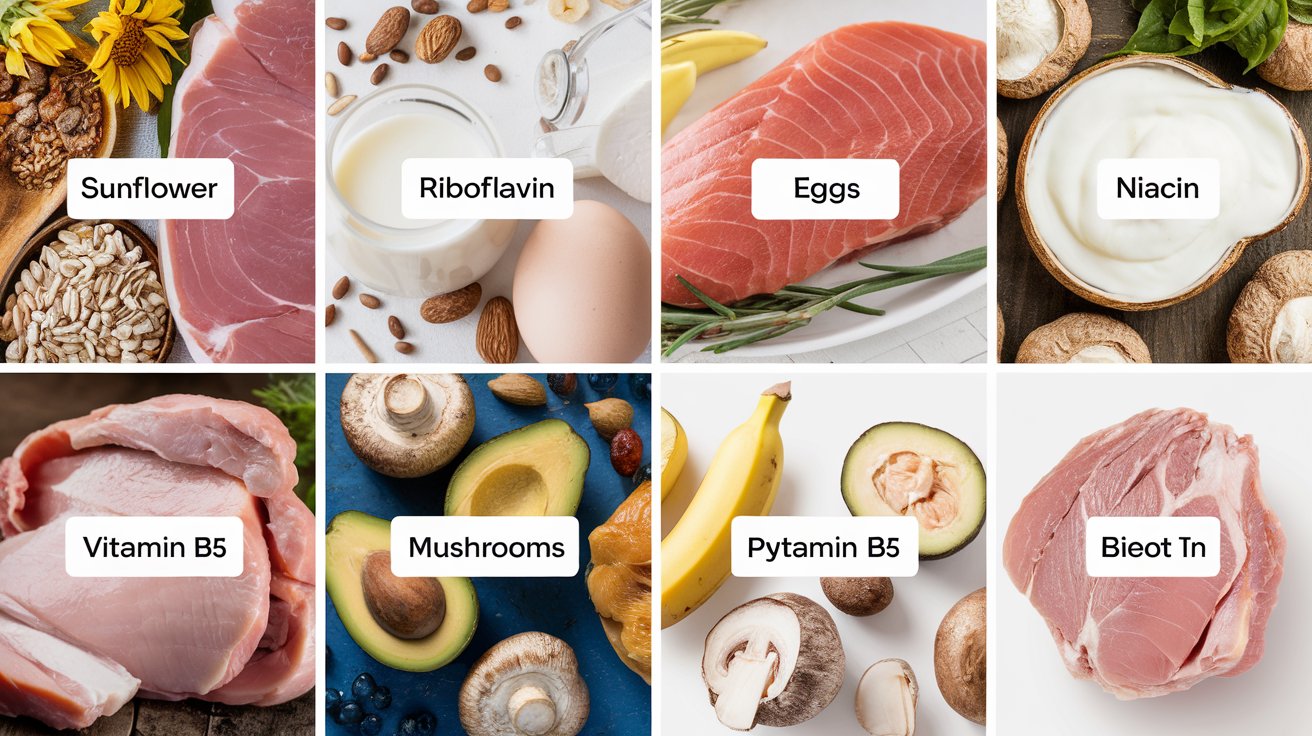
Food sources of Vitamin B2:
Vitamin B3 (Niacin)
Niacin, or Vitamin B3, is essential for maintaining healthy skin, supporting the nervous system, and aiding digestion. It also helps lower cholesterol levels and supports brain function.
Dietary sources of Vitamin B3:
- Chicken
- Tuna
- Peanuts
- Mushrooms
- Green peas
Vitamin B5 (Pantothenic Acid)
Vitamin B5 helps produce coenzyme A, a molecule needed for energy metabolism and the synthesis of fatty acids. It plays a significant role in producing hormones and maintaining a healthy digestive system.
Foods containing Vitamin B5:
- Avocados
- Yogurt
- Eggs
- Mushrooms
- Sweet potatoes
Vitamin B6 (Pyridoxine)
Vitamin B6 is crucial for brain development, neurotransmitter production, and the creation of hemoglobin, which carries oxygen in the blood. It also helps regulate mood and sleep patterns by producing serotonin and melatonin.
Food sources for Vitamin B6:
- Chicken
- Turkey
- Bananas
- Potatoes
- Spinach
Vitamin B7 (Biotin)
Biotin, also known as Vitamin B7, is best known for its benefits for hair, skin, and nails. It also supports metabolism by helping to convert food into energy.
Foods that provide Biotin:
- Eggs
- Almonds
- Salmon
- Sweet potatoes
- Spinach
Vitamin B9 (Folate)
Folate is critical for the synthesis and repair of DNA, which is especially important during times of rapid growth, like pregnancy. It also helps prevent anemia by producing healthy red blood cells.
Food sources of Folate:
- Leafy greens
- Asparagus
- Broccoli
- Lentils
- Fortified cereals
Vitamin B12 (Cobalamin)
Vitamin B12 is vital for maintaining healthy nerve cells, aiding in the production of DNA, and preventing megaloblastic anemia, a condition that can make people feel tired and weak.
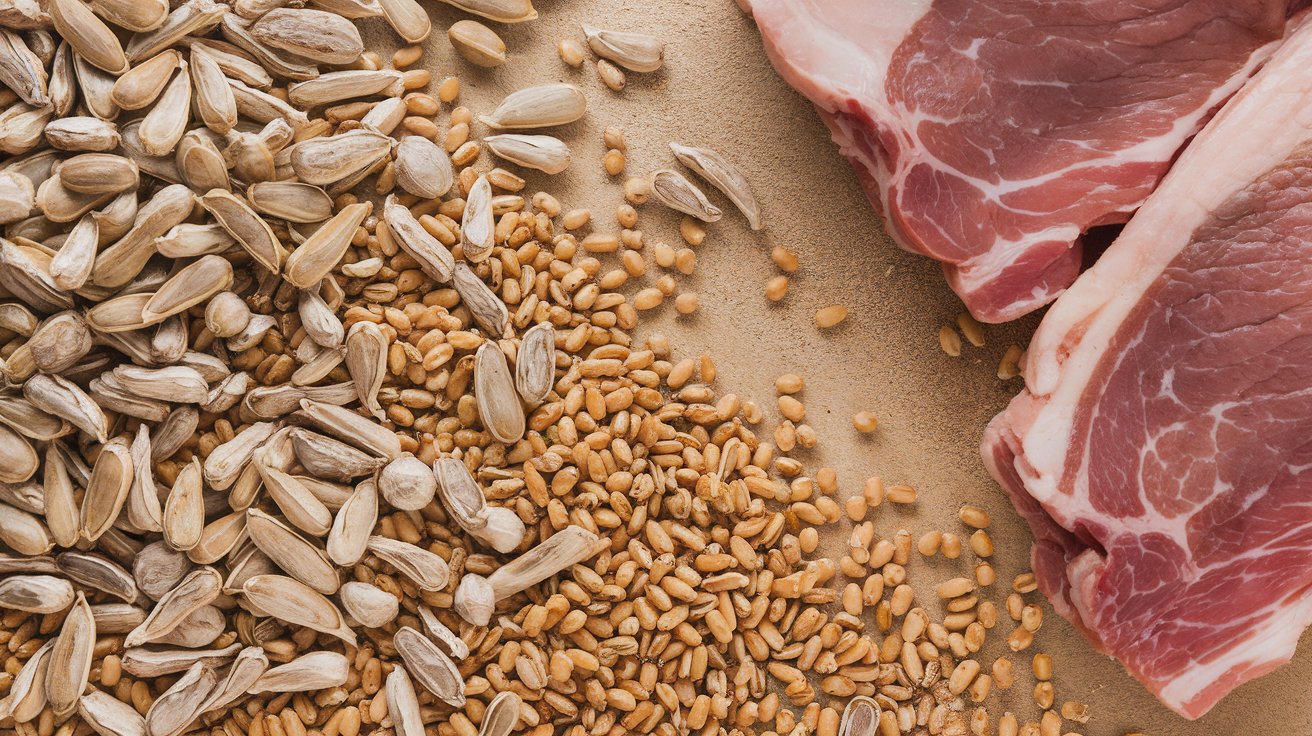
Dietary sources of Vitamin B12:
- Meat
- Fish
- Dairy products
- Eggs
- Fortified cereals
Vitamin C
Vitamin C, also known as ascorbic acid, is a powerful antioxidant that supports the immune system, aids in collagen production, and helps absorb iron from plant-based foods. It’s crucial for skin health and overall vitality.
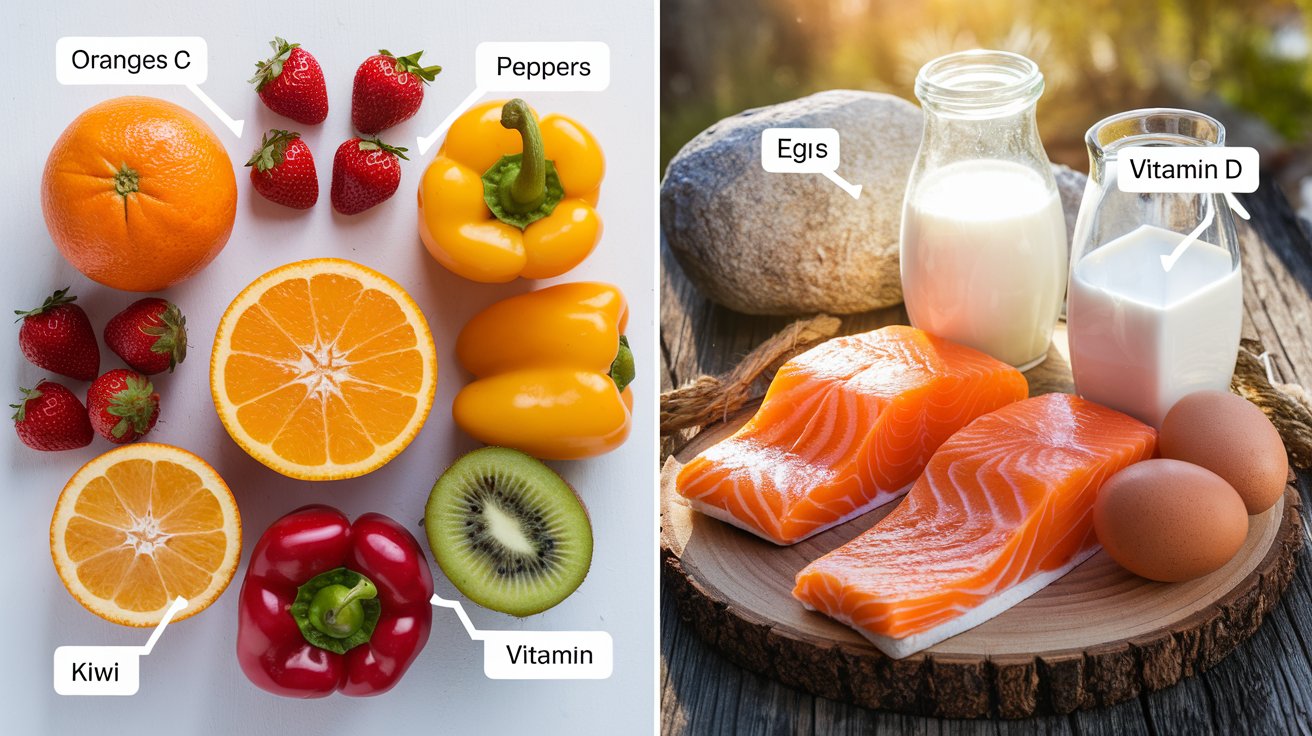
Top fruits and vegetables high in Vitamin C include::
- Oranges
- Strawberries
- Bell peppers
- Kiwi
- Broccoli
Vitamin D
Vitamin D plays a key role in calcium absorption and is important for keeping bones strong and healthy. It also supports immune function and helps reduce inflammation. The body can produce Vitamin D when exposed to sunlight, but it can also be obtained from food and supplements.
Sources of Vitamin D:
- Fatty fish (salmon, mackerel)
- Fortified milk
- Egg yolks
- Sunlight exposure
Vitamin E
Vitamin E serves as an antioxidant, shielding cells from oxidative stress. It is also important for immune function and skin health.
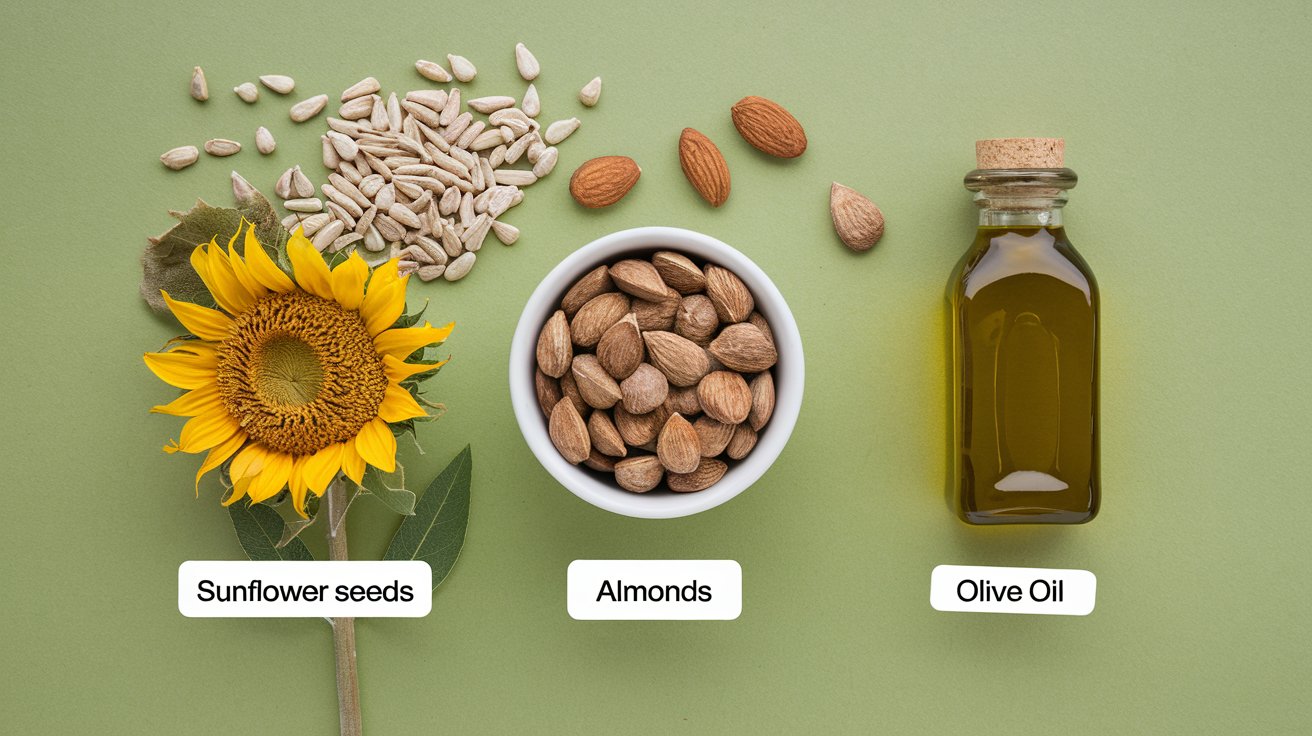
Foods high in Vitamin E:
- Sunflower seeds
- Almonds
- Spinach
- Avocado
- Olive oil
Vitamin K
Vitamin K is essential for blood clotting and maintaining bone health. Without it, the body would struggle to heal from injuries or maintain strong bones.
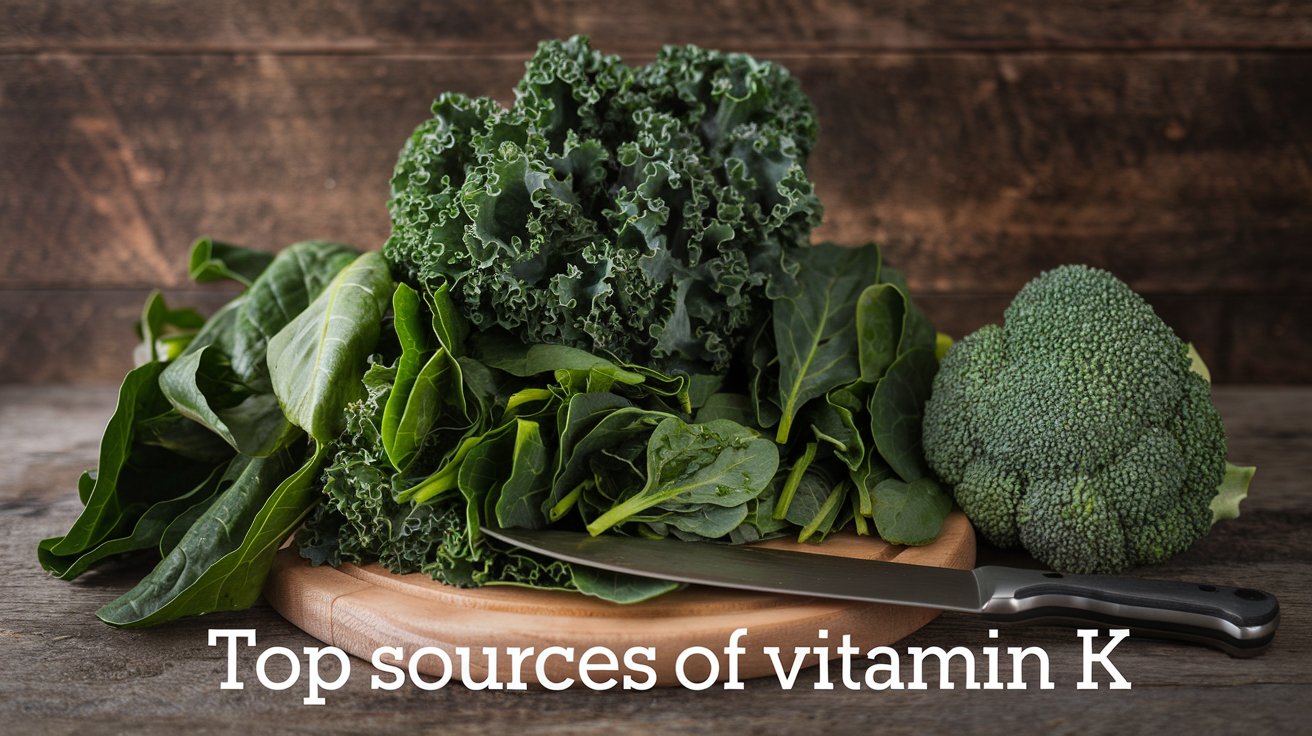
Sources of Vitamin K:
- Kale
- Spinach
- Broccoli
- Brussels sprouts
- Fermented soybeans
Importance of a Balanced Diet for Vitamin Intake
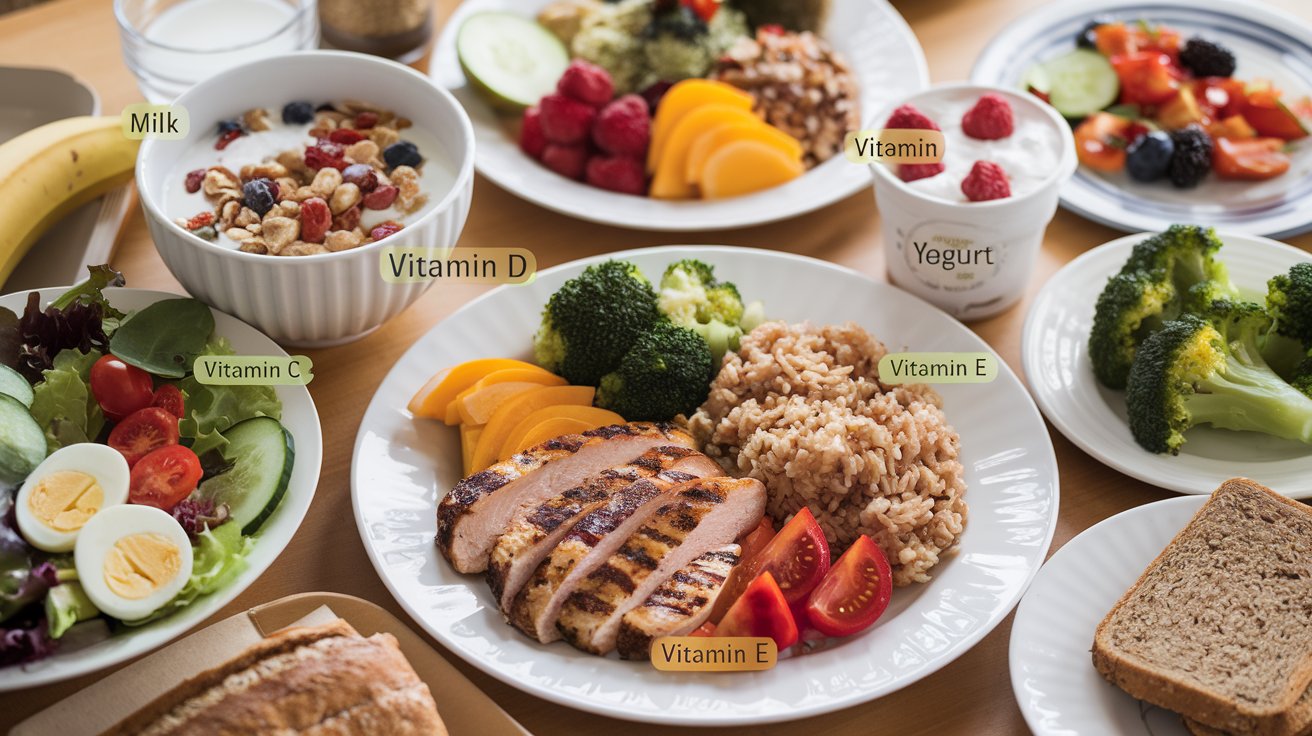
Vitamins are critical for numerous bodily functions, but the body cannot produce most of them on its own. That’s why it’s essential to maintain a well-balanced diet that includes a variety of food groups to ensure you’re meeting your vitamin requirements. Failing to consume sufficient vitamins can lead to deficiencies, which may result in health issues such as weakened immunity, poor skin health, and chronic fatigue.
For example, Vitamin A is important for vision and immune function, but a deficiency can lead to night blindness. Similarly, not getting enough Vitamin D can result in weak bones and increased susceptibility to fractures. Thus, a diet rich in diverse food sources is vital to prevent deficiencies and maintain optimal health.
How to Include More Vitamins in Your Daily Meals
Making small adjustments to your daily meals food chart can significantly increase your intake of essential vitamins. Here’s how:
- Breakfast: Add fruits like oranges or strawberries to your cereal or oatmeal for a Vitamin C boost. Consider fortified cereals that provide B vitamins, including folate and B12.
- Lunch: Incorporate a colorful salad with leafy greens like spinach (high in Vitamin K and folate) and carrots (rich in Vitamin A). Add some grilled chicken or tuna for a source of Vitamin B3 and B6.
- Dinner: Include a portion of fatty fish like salmon or mackerel, which are rich in Vitamin D and Omega-3 fatty acids. Serve with a side of broccoli or sweet potatoes for a range of vitamins like A, C, and E.
- Snacks: Snack on almonds or sunflower seeds to get more Vitamin E, or hard-boiled eggs for B7 (biotin).
These simple meal adjustments will help you increase your vitamins intake naturally through food chart.
Vitamin Supplements: When and Why You Might Need Them
While getting vitamins from food is ideal, there are food chart situations where supplements may be necessary. For instance, if you follow a vegan or vegetarian diet, you might find it challenging to get enough Vitamin B12, as it’s mostly found in animal products. In such cases, a B12 supplement can be a useful addition to your diet.
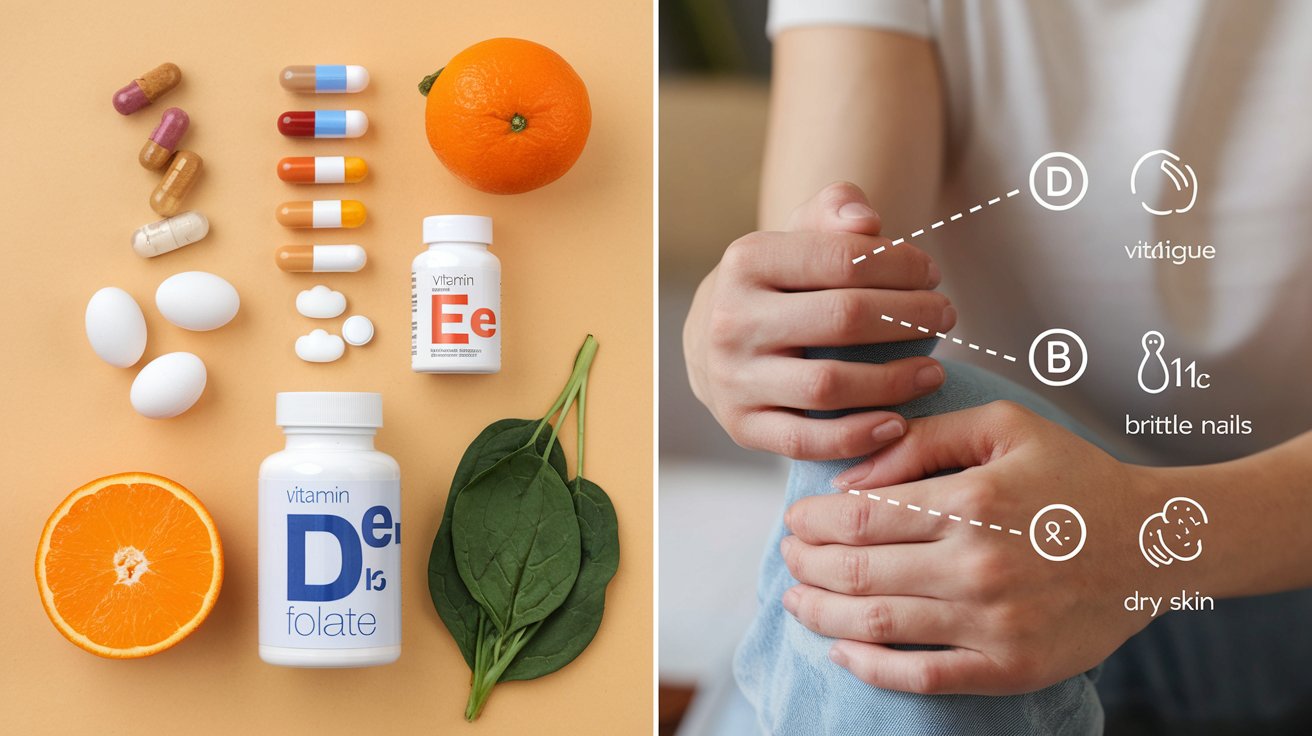
Similarly, individuals who live in areas with limited sunlight exposure might need to take a Vitamin D supplement, as it’s hard to get adequate amounts from food alone.
It’s important to consult a healthcare professional before starting any vitamin supplements to ensure you’re taking the correct dosage and not exceeding safe levels, as over-supplementation can lead to toxicity, particularly concerning fat-soluble vitamins such as A, D, E, and K.
Vitamin Deficiency Symptoms and What to Look For
Recognizing the signs of a vitamin deficiency early can prevent more serious health issues. Here are common symptoms of vitamin deficiencies and what you should watch for:
- Vitamin A deficiency: Dry skin, dry eyes, night blindness, and delayed wound healing.
- Vitamin B1 deficiency: Fatigue, irritability, muscle weakness, and nerve damage.
- Vitamin B12 deficiency: Fatigue, memory loss, difficulty walking, and anemia.
- Vitamin C deficiency: Frequent infections, slow wound healing, dry skin, and scurvy (in extreme cases).
- Vitamin D deficiency: Bone pain, muscle weakness, frequent illnesses, and fatigue.
- Vitamin E deficiency: Muscle weakness, vision problems, and weakened immune response.
- Vitamin K deficiency: Excessive bleeding, easy bruising, and weak bones.
If you notice any of these symptoms, it’s essential to adjust your diet or consult a healthcare provider to identify potential deficiencies.
How Cooking Methods Affect Vitamin Retention
The way you prepare your food chart can have a significant impact on its vitamins content. Some vitamins, especially water-soluble ones like Vitamin C and most B vitamins, can be lost during the cooking process, particularly when boiling food. To retain the maximum amount of vitamins, consider the following tips:
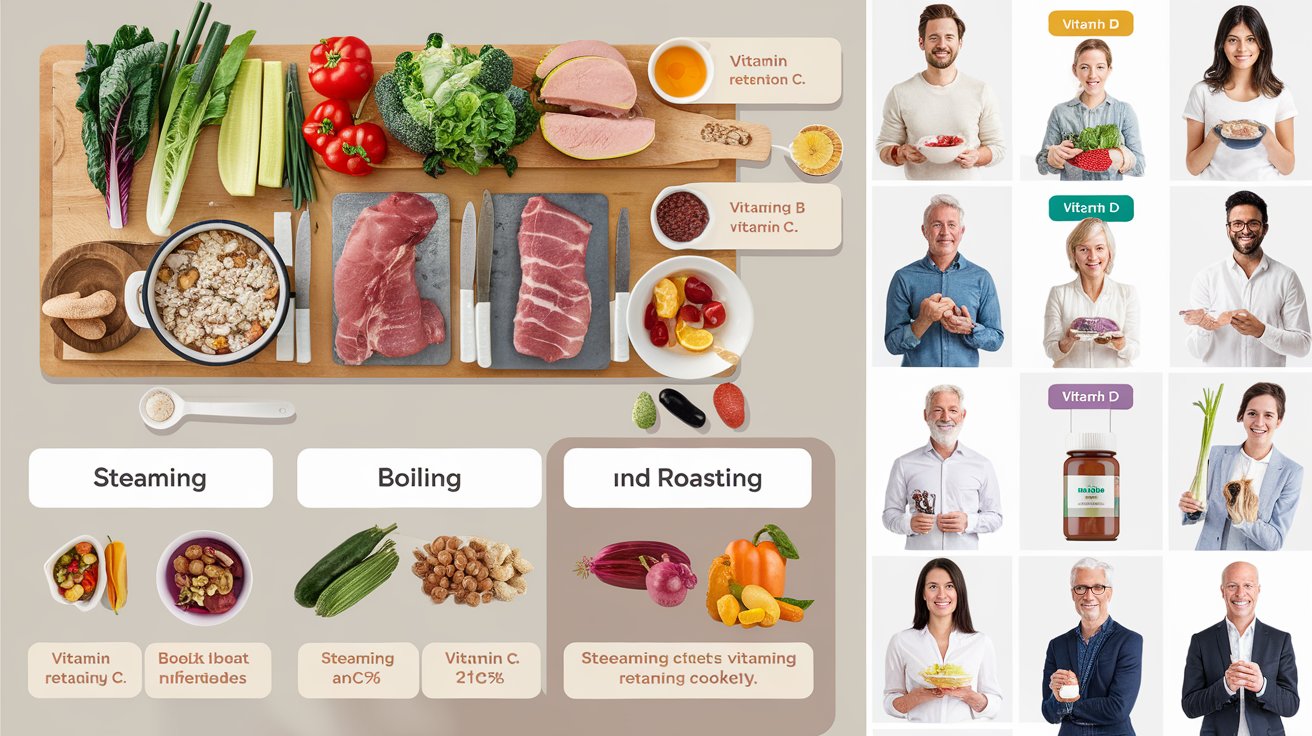
- Steaming: Steaming vegetables preserves more vitamins than boiling. It’s an excellent method for retaining Vitamin C, folate, and B vitamins.
- Roasting and grilling: These methods can help retain fat-soluble vitamins like Vitamin A, D, and E while adding flavor to foods like fish and meat.
- Minimal cooking time: Reducing the cooking time helps retain more water-soluble vitamins. Quick stir-frying is a great way to preserve the nutrients in vegetables.
- Raw consumption: Eating certain foods raw, like leafy greens or fruits, ensures that you’re getting all the available vitamins without loss from cooking.
By being mindful of your cooking methods, you can ensure that the vitamins in your food remain intact and beneficial for your health.
How Age, Lifestyle, and Health Conditions Affect Vitamin Needs
Your vitamin needs can change throughout different stages of life. For example, pregnant women need extra folate to support fetal development, while older adults may require more Vitamin D and calcium to maintain bone health.
- Pregnancy: Pregnant women should increase their intake of folate and iron to support the development of the baby and avoid birth defects.
- Aging: As we age, our body becomes less efficient at absorbing certain vitamins, particularly Vitamin B12 and Vitamin D, so supplementation or dietary adjustments may be necessary.
- Active lifestyles: Those with active lifestyles may need higher amounts of vitamins like B-complex vitamins for energy metabolism and Vitamin C for tissue repair.
- Chronic illnesses: Individuals with certain conditions, such as diabetes or gastrointestinal disorders, may require additional vitamins to support their health and manage symptoms.
It’s crucial to assess your personal vitamin needs based on your age, lifestyle, and any health conditions you may have, ensuring that you’re consuming the right amount of vitamins for optimal well-being.
Conclusion and FAQs
Vitamins are critical to our well-being, and consuming a balanced diet food chart rich in these essential nutrients ensures the body functions at its best. From Vitamin A to K, each vitamin plays a specific role in promoting health and preventing deficiencies.
Read Related Articles
High Protein Diet Snacks: Fuel Your Fitness Routine with These Ideas
Frequently Asked Questions
- What are the most important vitamins to take daily? All vitamins are important, but focus on Vitamin D, Vitamin C, and B-complex vitamins for daily health.
- Is it possible to obtain all the necessary vitamins through my diet? Yes, but supplements can help in cases of deficiency or dietary restrictions.
- How much Vitamin D do I need? The recommended daily intake varies, but for most adults, it’s between 600-800 IU per day.
- What happens if I have too much Vitamin A? Excess Vitamin A can lead to toxicity, causing symptoms like dizziness and nausea.
- Can I overdose on Vitamin B12? Vitamin B12 is water-soluble, so excess amounts are typically excreted by the body, making overdose rare.
- What is the best way to ensure I get enough vitamins? Eat a varied diet with plenty of fruits, vegetables, lean proteins, and whole grains.
Explore More Articles
The best foods for vitamins and minerals
No products found.

Welcome to Merge Blog!
Dive into quick, nutritious recipes, expert health tips, local food finds, and the latest in nutrition. Let’s explore healthier living together!

I’m Divya Bharathi, the person behind MergeBlog. I’m a passionate food enthusiast sharing simple, nutritious recipes and tips for a balanced lifestyle. Join me on this delicious journey!
Divya Bharathi
SUBSCRIBE & FOLLOW
MUST-READ ARTICLES
Join the Newsletter
Dive into quick, nutritious recipes, expert health tips, local food finds, and the latest in nutrition. Let’s explore healthier living together!



